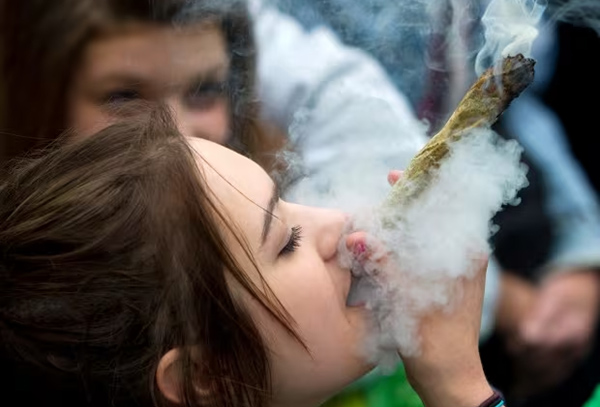Legalization Of Recreational Cannabis And its Affects On Young Adults

Legalization Of Recreational Cannabis And its Affects On Young Adults.

In an exciting study published in the Journal of Psychoactive Drugs, researchers looked at the impact of recreational marijuana legalization on marijuana use in young adults. The study, funded by the National Institute on Drug Abuse, analyzed survey data from two groups of young adult marijuana users before and after the legalization of marijuana in Los Angeles. Surprisingly, there was no significant difference in the frequency of marijuana use among populations before and after legalization, except for an increase in the use of edible foods. These findings reveal the complex relationship between cannabis legalization and young people's consumption patterns, prompting further exploration of prevention efforts and targeted interventions.
Research Overview
A study published in the Journal of Psychoactive Drugs set out to investigate the impact of recreational marijuana legalization on marijuana use and other substance use among young people. The study compared data from two groups of young adult marijuana users in Los Angeles - one surveyed in 2014-2015 and the other in 2019-2020. The study was funded by the National Institute on Drug Abuse (NIDA) and conducted by researchers at Drexel University and the University of Southern California, Los Angeles.
Background: California legalizes marijuana
California has been at the forefront of legalizing marijuana, with medical marijuana legalized in 1996 and recreational marijuana legalized in 2016. Recreational marijuana legalization is an important step for the state, and it opens up new opportunities to study the effects of legalization, especially among young people.
Research Methodology
The study used survey data from young marijuana users aged 18 to 20. The researchers compared data from two groups - one surveyed before legalization and the other surveyed after. The sample size of the study was 172 in the pre-legalization cohort and 139 in the post-legalization cohort. The study period of the pre-legalization cohort is 2014-2015, and the study period of the post-legalization cohort is 2019-2020. Survey data collection involved self-reports from participants. In particular, the researchers focused on comparing the use of marijuana, alcohol, and cigarettes between the two groups.
Research Results
The study found no significant difference in the frequency of marijuana use among populations before and after legalization, except for an increase in the use of edible foods. Although access to marijuana may increase as a result of legalization, overall marijuana use remains relatively stable among young people. Interestingly, the post-legalization cohort reported fewer days of alcohol and cigarette use than the pre-legalization cohort.
Comparison of Drinking and Smoking
In addition to analyzing marijuana use, the study compared alcohol and cigarette use before and after marijuana legalization. The results showed that the number of days of drinking and smoking decreased among young people after legalization. This suggests a possible shift in substance use patterns among young people, with reductions in alcohol and cigarette use coinciding with the legalization of recreational marijuana.
Effects on Edible Cannabis Consumption
One notable finding of the study was an increase in the use of edible cannabis products among young people after legalization. This could be attributed to a wider range of products being offered in the legal recreational cannabis market. Edible cannabis products may appeal to young people who prefer alternative consumption methods or are looking for prudent ways to consume cannabis.
Differences Between Medical and Recreational Marijuana Users
The study also highlights differences between medical marijuana users and recreational marijuana users. Medical marijuana patients were more likely to self-report their medical marijuana use in the cohort before and after legalization. This suggests that medical marijuana users may be more willing to be open about their use, which may be due to the legal protections and verification provided by medical marijuana laws.
Frequency of Marijuana Use Before and After Legalization
By examining the frequency of marijuana use, the study found no significant differences in the number of days of use or the number of uses per day among populations before and after legalization. This suggests that the legalization of recreational marijuana has not led to a significant increase in total marijuana use among young people. However, it is worth noting that the use of edible foods did increase significantly in the post-legalization group.
Comparison with Previous Studies
Previous research has also explored the impact of legalization on marijuana use among young people. A study published earlier this year found an increase in marijuana use and overuse among individuals aged 21-23 who were not in college. This highlights the need for further research and targeted prevention efforts to address the potential risks associated with increased cannabis use in specific age groups.
Impact on Prevention
The results of the study have important implications for prevention efforts targeting cannabis use among young people. By understanding the impact of recreational marijuana legalization, prevention strategies can be more effectively developed and targeted at at-risk populations. Education and awareness programs can play a vital role in providing accurate information about the potential risks and benefits of cannabis use and in promoting responsible consumption behavior. In addition, identifying and meeting the specific needs of different user groups, such as medical marijuana patients, can help develop prevention strategies tailored to their unique circumstances.
Together, the study provides valuable insight into the impact of recreational marijuana legalization on marijuana use among young people. While the overall frequency of cannabis use has remained stable, other substance use patterns have changed significantly, and edible cannabis consumption has increased. These findings highlight the importance of continued research and targeted prevention efforts to ensure that young people use cannabis responsibly.





